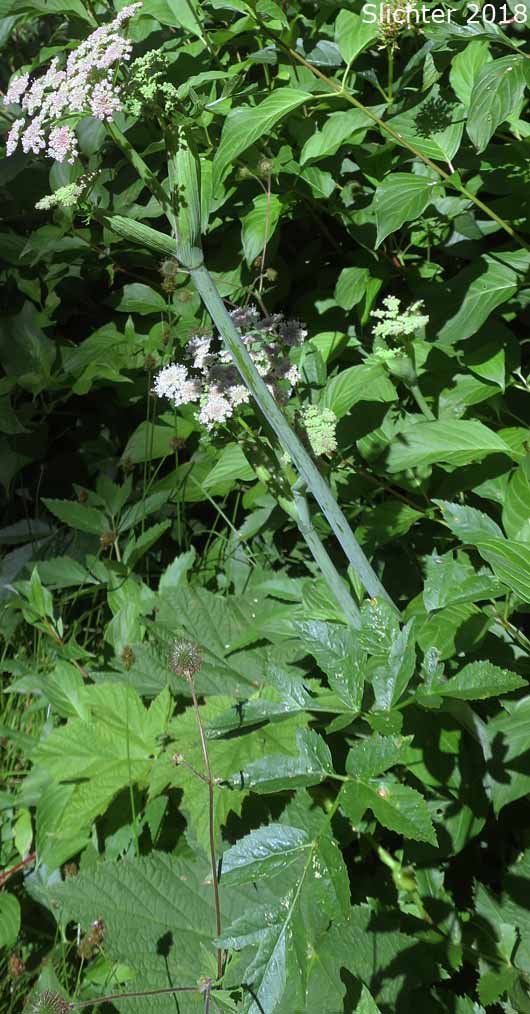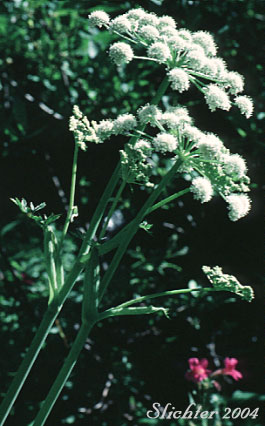
 The
photo above shows sharp-tooth angelica as seen in Shorthorn Creek, along Trail
#9, the Shorthorn Trail on the south side of Mt. Adams........August 31, 1996.
The
photo above shows sharp-tooth angelica as seen in Shorthorn Creek, along Trail
#9, the Shorthorn Trail on the south side of Mt. Adams........August 31, 1996.
Also known as shining angelica, sharp-tooth angelica is a perennial wildflower with stout, erect stems from 60-200 cm high. The stems and leaves are largely glabrous below, while a few short, stiff hairs may be found on the upper stem and within the inflorescence. The basal leaves are 20-40 cm long, long petiolate and bipinnately compound. The leaflets are broadly lanceolate or ovate, measuring 5-11 cm long, and with the lowermost pair of leaflets on the secondary division often with a lateral lobe. The leaflet margins are coarsely toothed. The stem leaves are much smaller and have a greatly inflated petiole.
The inflorescence is a terminal umbel with several lateral umbels arising from the uppermost leaf axils. The herbage of the inflorescence is somewhat rough or consists of short, stiff hairs. The 18-25 rays of the umbel are 5-10 cm long and typically unequal in length. Bracts at the base of the umbel and beneath the umbellets are absent. The pedicels in fruit are 3-9 mm long while the flowers are white. The fruits are oblong-elliptic in shape with shin to corky lateral wings nearly as wide as the body of the fruit. The intermediate ribs of the fruit are narrow to partially winged. The fruits measure 4-7 mm long and 4-5 mm wide.
Sharp-tooth angelica may be found in moist meadows, streambanks and moist open woods and thickets.
Sharp-tooth angelica may be found from southwestern Alberta south through southern British Columbia and then south on both sides of the Cascade Mts to northern California. It is found eastward across Oregon and Washington to southern Idaho, northern Nevada and Wyoming.